Rugby Europe
Rugby Europe is the administrative body for rugby union in Europe. It was formed in 1999 to promote, develop, organise and administer the game of rugby in Europe under the authority of World Rugby (the world governing body of rugby union).
 | |
| Established | 1934 (as FIRA) 1999 (as FIRA–AER) 2014 |
|---|---|
| Type | Sports federation |
| Headquarters | Paris, France |
| Coordinates | 48°52′46″N 2°19′41″E |
Membership | 47 unions |
President | Octavian Morariu |
| Website | rugbyeurope.eu |
The predecessor to Rugby Europe was the Fédération Internationale de Rugby Amateur (FIRA) which was established in 1934 to administer rugby union in Europe outside the authority of the International Rugby Football Board (as World Rugby was then called), and quickly came to spread outside the continent. FIRA agreed to come under the auspices of World Rugby in the 1990s and appended 'Association Européenne de Rugby' to its name in a return to being a European body. In 2014 the organisation was renamed Rugby Europe as part of a re-branding strategy.
Member unions
Rugby Europe has 47 member unions as of January 2019.[1] Not all European member unions are members of World Rugby.[2] Rugby Europe's members are listed below, with the year each union joined World Rugby shown in brackets.
There are forty World Rugby members that are part of Rugby Europe
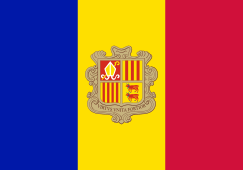


.svg.png)



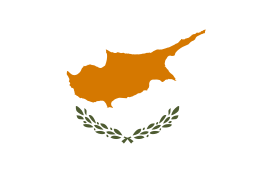








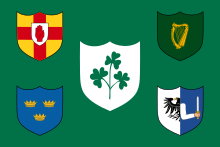





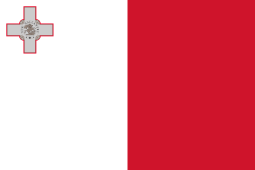
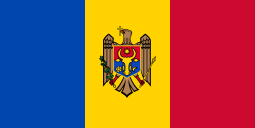







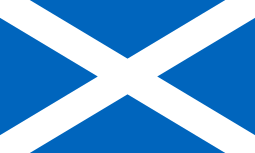







.svg.png)
There are seven members of Rugby Europe that are not affiliated with World Rugby:
There are six European nations that are not currently affiliated with Rugby Europe or World Rugby:
Notes:
History
FIRA (1934–1999)
In 1931, the French Rugby Federation (FFR) was suspended from playing against the other IRFB nations, because the sport's authorities had suspected for many years that the (FFR) was allowing the abuse of the rules on amateurism. As a result, Fédération Internationale de Rugby Amateur (FIRA) was founded in 1934. It was designed to organise rugby union outside the authority of the International Rugby Football Board (as it was known at the time). The founder members were Italy, France, Spain, Belgium, Portugal, Catalonia, Romania, Holland and Germany.[5] In 1941 the Spanish dictator Francisco Franco forcibly merged Catalonia's team into the Spanish rugby team. Nowadays the Catalan Federation is trying unsuccessfully to reverse this decision, claiming the historical rights as a founder member.
In 1965, FIRA inaugurated the FIRA Nation's Cup, and in 1974 the FIRA Championship, later renamed the European Nations Cup (ENC). The ENC provided international competition for European countries outside the Five Nations. The ENC was played in three divisions, comprising most countries in Continental Europe. The ENC later expanded its horizons, taking in Morocco and Tunisia. The ENC first division competition was won most often by France, but Romania won it five times, and Italy once, in its last edition, in 1995–1997. France and Italy no longer play in the ENC, as both countries now play in the Six Nations Championship.
FIRA–AER (1999–2014)
In 1990s the FIRA recognised the IRB as the governing body of rugby union worldwide and after negotiations with the IRB, it agreed to integrate itself within the organisation. In 1999 it changed its name to "FIRA – Association of European Rugby" (FIRA–AER), to promote and rule over rugby union in the European area and to run the junior world championship. FIRA-AER organised both the under-19 and under-21 world championships until IRB folded them into the competitions now known as the World Rugby Under 20 Championship and World Rugby Under 20 Trophy in 2008.
International competitions
| Nation | Rank (Hi–Low) |
|---|---|
| England | 1–8 |
| France | 2–9 |
| Ireland | 1–9 |
| Wales | 1–10 |
| Scotland | 5–12 |
| Italy | 8–15 |
The highest level of rugby competition played among European countries is the Six Nations Championship, contested every year in February and March by the tier-1 European nations: England, Wales, Scotland, Ireland, France, and Italy — all of them routinely ranked in the Top 15 in the world. The tournament began in 1883, and is the oldest international rugby tournament. The tournament has been known as the Six Nations Championship since 2000, when Italy joined; it had previously been known as the Five Nations. There is no promotion or relegation, and since 2000, no country has entered or left the Six Nations.
The next level of international rugby, played by tier-2 and tier-3 European countries, is the Rugby Europe International Championships. It is made up of five levels or divisions: Championship, Trophy, Conference 1, Conference 2 and Development. Each division consists of five or six teams, and is played on a round robin format for a one-year cycle, with promotion and relegation between levels and the end of the season. As of 2020, the top division Rugby Europe Championship is contested by six countries - Belgium, Georgia, Portugal, Romania, Russia and Spain. Of these countries, all but Belgium have played in a Rugby World Cup and are routinely ranked in the Top 30 in the world. Other countries that have participated in past editions include Germany, Ukraine, Czech Republic and the Netherlands.
Other international competitions
|
Men
Women
|
Youth
|
Professional competitions
The following table shows the professional rugby union competitions in various European countries.
| League | Country | Tier | Began* | Teams | Games | Total attendance | Average attendance | Ref. |
|---|---|---|---|---|---|---|---|---|
| Top 14 | 1 | 1892 | 14 | 182 | 2,414,951 | 13,269 | [7] | |
| Premiership | 1 | 1987 | 12 | 135 | 1,697,177 | 12,925 | [8] | |
| Pro14 | 1 | 2001 | 14 | 135 | 1,052,795 | 7,856* | [9] | |
| Rugby Pro D2 | 2 | 2000 | 16 | 243 | 1,025,910 | 4,222 | ||
| Championship | 2 | 1987 | 12 | 132 | 287,262 | 2,176 | [10] |
Notes:
- Average attendances vary significantly by country within the Pro14—Ireland (12,347), Wales (8,136), Scotland (4,570), and Italy (2,744).
- The English Premiership and French Top 14 both turned professional in 1996. Two Italian teams joined the Celtic League (since renamed Pro12) in 2010.
- England's second-level Championship became fully professional in 2009 after having been semi-professional.
References
- "Unions Members". Rugby Europe. Retrieved 24 January 2019.
- "Handbook" (PDF). World Rugby. 2014. pp. 16–10. Archived from the original (PDF) on 8 February 2015. Retrieved 28 January 2015.
- ""Λουκέτο" στο ράγκμπι". Sport24 (in Greek). Archived from the original on 30 December 2014. Retrieved 31 March 2015.
- "World Rugby gives Cyprus warm welcome but Armenia and Greece the cold shoulder". ASOIF. 21 November 2014. Retrieved 20 October 2016.
- "About us". Rugby Europe. Retrieved 19 August 2017.
- FIRA-AER Becomes RUGBY EUROPE Archived 14 July 2014 at the Wayback Machine FIRA-AER website, published: 20 June 2014, accessed: 25 June 2014
- "Statistiques générales, saison 2011–2012" (in French). Ligue nationale de rugby. Archived from the original on 29 October 2013. Retrieved 19 November 2012. Select "Affluences" (attendance) tab from the clickable banner. Attendance statistics are for the regular season only; they do not include the five playoff games.
- "Aviva Premiership Rugby 11/12 / Attendance". Premiership Rugby Limited. 29 May 2012. Archived from the original on 3 February 2013. Retrieved 30 May 2012.
- "Match Centre : RaboDirect PRO12 Fixtures & Results, 2011–2012". PRO12. Retrieved 19 November 2012. The attendance for one match, Ulster–Leinster on 20 April 2012, was not reported by the league. BBC Sport reported the attendance for this match at 10,500, which was used in the calculations here.
- "Rugby Stats | Championship 09/10 |". Statbunker.com. Archived from the original on 27 February 2012. Retrieved 20 October 2011.